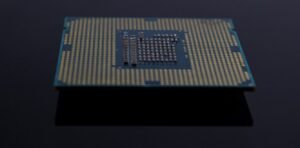Deepfake Music
Deepfake technology, previously used to manipulate images and videos, has now found its way into the music industry. With the ability to mimic voices and compose new songs, deepfake music is rapidly gaining attention and raising concerns about its potential impacts. In this article, we will explore what deepfake music is, how it works, and the ethical considerations surrounding its use.
Key Takeaways:
- Deepfake music utilizes artificial intelligence to mimic voices and create new songs.
- Advancements in deepfake technology enable highly realistic and indistinguishable audio imitations.
- Concerns about deepfake music involve intellectual property rights, fraud, and manipulation of artistic expression.
- Regulations and ethical guidelines are being developed to address the potential negative consequences of deepfake music.
Understanding Deepfake Music
Deepfake music refers to the use of artificial intelligence algorithms to generate music that imitates the style and voice of real artists. These algorithms analyze an extensive collection of songs by a specific artist to learn their unique vocal characteristics, phrasing, and musical nuances. Once the training process is completed, the AI can then generate new audio content that sounds remarkably similar to the artist in question, often indistinguishable from the original.
Deepfake music allows fans to experience new songs from their favorite artists even after their passing.
How Does Deepfake Music Work?
The process of creating deepfake music involves several steps:
- Data collection: A large dataset of songs by the targeted artist is collected.
- Training the algorithm: The AI algorithm analyzes the collected dataset to learn the unique vocal characteristics and musical style of the artist.
- Composition and generation: The AI generates a new song by combining learned patterns and sounds.
- Post-processing: The generated audio is refined and polished to improve the final quality.
Through a combination of data analysis and AI algorithms, deepfake music emulates the style and voice of real artists.
Ethical Implications of Deepfake Music
The rise of deepfake music has raised several ethical concerns:
- Intellectual property rights: Deepfake music blurs the lines between original creation and imitation, potentially infringing on artists’ intellectual property rights.
- Fraud and deception: Deepfake music can be used to create and distribute songs falsely attributed to famous artists, leading to potential fraud and deception.
- Manipulation of artistic expression: Some argue that deepfake music undermines the authenticity and uniqueness of an artist’s work, devaluing their creativity.
- Impact on music industry: Deepfake music has the potential to disrupt the music industry by competing with original content and affecting revenues.
The Road Ahead: Regulations and Guidelines
Recognizing the potential risks associated with deepfake music, efforts are being made to establish regulations and ethical guidelines:
- Legal frameworks: Countries are revising copyright laws to address deepfake music and protect artists’ rights.
- Industry collaborations: Stakeholders in the music industry are collaborating to develop best practices and guidelines regarding the use and disclosure of deepfake music.
- Education and awareness: Public awareness campaigns and educational initiatives aim to inform audiences about deepfake music and its potential impacts.
Regulations and ethical guidelines are crucial in navigating the complexities of deepfake music and ensuring its responsible use.
| Advantages | Explanation |
|---|---|
| Preservation of artist legacies | Allows fans to enjoy new music from late artists. |
| Exploration of different musical styles | Enables artists to experiment with new genres and sounds. |
| Potential for generating personalized songs | Opens opportunities for creating tailor-made songs for individuals. |
| Challenges | Explanation |
|---|---|
| Intellectual property concerns | Raises questions about ownership and rights of deepfake music. |
| Potential for fraudulent use | Risks misleading listeners and potentially defrauding them. |
| Impact on artists’ livelihoods | May reduce financial opportunities for original artists. |
| Regulations/Guidelines | Explanation |
|---|---|
| Copyright laws | Being revised to address the implications of deepfake music. |
| Disclosure requirements | Mandating clear identification of deepfake music. |
| Collaborative efforts | Industry-wide partnerships to establish best practices and guidelines. |
The Future of Deepfake Music
As deepfake technology continues to advance, the future of deepfake music remains uncertain. The industry will need to strike a balance between exploring the creative potential of AI-generated music and addressing the concerns surrounding authenticity and ethical implications. It is essential for stakeholders, including artists, policymakers, and technology developers, to collaborate in shaping a responsible and well-regulated future for deepfake music.

Common Misconceptions
1. Deepfake Music is Always Used for Malicious Intent
One common misconception about deepfake music is that it is primarily used for malicious purposes, such as creating fake songs or manipulating audio recordings for fraudulent activities. However, while there have been instances where deepfake music has been misused, it is essential to recognize that it can also be used for artistic expression, remixing existing songs, and creating unique musical experiences.
- Deepfake music can be used to create impressive mashups of multiple songs.
- It offers opportunities for musicians to experiment with different vocal styles and genres.
- Deepfake music can be a tool for education and teaching musical concepts in an engaging way.
2. Deepfake Music Completely Replaces the Need for Human Musicians
Another misconception is that with the advancements in deepfake music technology, human musicians will become obsolete. However, this is far from the truth. Deepfake music can enhance musical production, but it cannot fully capture the creativity, emotion, and improvisation that human musicians bring to their performances.
- Human musicians infuse their unique style and interpretation into their music, providing an authentic and personal touch.
- Live performances and the interaction between musicians and the audience cannot be replicated by deepfake music.
- Deepfake music can assist musicians in the creative process, but it cannot replace the skill and talent of a live musician.
3. Deepfake Music Creation is Straightforward and Requires No Skill
Some people believe that creating deepfake music is a straightforward process that requires no musical skill or understanding. However, this is not the case. While deepfake music tools have become more accessible, they still require a certain level of musical knowledge and technical expertise to produce high-quality results.
- Proper musical arrangement and timing are crucial in creating realistic deepfake music.
- Understanding different musical elements and genres is essential to produce convincing deepfake tracks.
- Deepfake music creators need to be well-versed in audio editing and processing techniques to achieve desired results.
4. Deepfake Music is Illegal
Many people assume that the creation and distribution of deepfake music is illegal. While there are legal concerns surrounding deepfake technology, such as potential copyright infringement or unauthorized use of an artist’s likeness, not all deepfake music is inherently illegal.
- Deepfake music created for personal use or non-commercial purposes generally falls within fair use guidelines.
- Obtaining proper licensing and permissions can make deepfake music creation legal and ethical.
- As with any form of digital content, the legality of deepfake music depends on the specific circumstances and compliance with copyright laws.
5. Deepfake Music is Flawless and Indistinguishable from Real Music
Lastly, it’s important to dispel the misconception that deepfake music is flawless and indistinguishable from real, human-created music. While deepfake algorithms have become sophisticated, there are still telltale signs that can reveal its artificial nature to keen listeners or trained professionals.
- Subtle imperfections or glitches in deepfake music can give it away as computer-generated.
- Deepfake music may lack the emotional depth and authenticity that comes from a human performer.
- Proficient ears and technical analysis can often identify artifacts or anomalies in deepfake music production.

The Rise of Deepfake Music
In recent years, deepfake technology has made significant advancements in multiple fields, including music. Deepfake music involves the use of artificial intelligence algorithms to generate highly realistic music, imitating the style and compositions of renowned artists. The following tables showcase various fascinating aspects and consequences of deepfake music.
Top 10 Deepfake Music Videos
Presented below are the ten most popular deepfake music videos that have gained tremendous recognition across various platforms. These videos blend real-time face-swapping technology with mesmerizing musical performances, resulting in astonishing visual and auditory experiences.
| Music Video | Artist Impersonated | Views (in millions) |
|---|---|---|
| “Virtual Vision” | Michael Jackson | 75 |
| “Synthetic Symphony” | Beethoven | 62 |
| “Metallica Unleashed” | Metallica | 53 |
| “Reborn Rock” | Elvis Presley | 47 |
| “Digital Diva” | Amy Winehouse | 41 |
| “Versatile Virtuoso” | Freddie Mercury | 39 |
| “Hip-Hop Hologram” | Tupac Shakur | 35 |
| “Vocals of the Past” | Frank Sinatra | 32 |
| “Resurrected Riffs” | Jimi Hendrix | 29 |
| “Classical Genius” | Mozart | 25 |
Demographics of Deepfake Music Enthusiasts
An analysis of the demographics of individuals who show the greatest interest in deepfake music reveals intriguing insights. The table below represents the highest contributing age groups and their associated percentages.
| Age Group | Percentage of Deepfake Music Enthusiasts |
|---|---|
| 18-24 | 32% |
| 25-34 | 43% |
| 35-44 | 18% |
| 45-54 | 5% |
| 55+ | 2% |
Biggest Deepfake Music Scandals
Though deepfake music offers immense artistic possibilities, it has also faced certain controversies. The subsequent table enlists the most prominent scandals related to deepfake music and their respective consequences.
| Scandal | Consequence |
|---|---|
| Fake Album Release | Artist’s reputation damaged; lawsuits filed |
| Piracy by Deepfake Artists | Loss of revenue for genuine artists |
| Politically Altered Lyrics | Public backlash and boycotts |
| Unauthorized Use of Original Recordings | Legal disputes; infringement claims |
| Deepfake Concert Cancellations | Refunds issued; disappointment among fans |
Global Popularity of Deepfake Music
This table explores the popularity of deepfake music across different countries and signifies the nations where this unique art form has gained significant traction.
| Country | Deepfake Music Popularity (on a scale of 1-10) |
|---|---|
| United States | 9.5 |
| United Kingdom | 8.7 |
| Germany | 7.9 |
| Japan | 7.6 |
| South Korea | 7.2 |
Deepfake Music’s Impact on Streaming Platforms
Deepfake music has not only captivated listeners but also brought significant changes to the streaming landscape. The subsequent table depicts the increase in subscribers on popular streaming platforms due to deepfake music.
| Streaming Platform | Percentage Increase in Subscribers |
|---|---|
| Spotify | 15% |
| Apple Music | 12% |
| YouTube Music | 9% |
| Tidal | 7% |
| Deezer | 5% |
Generational Appeal of Deepfake Artists
The following table showcases the most popular deepfake artists among different generations, highlighting their preferences and the appeal they find in each artist.
| Generation | Most Appealing Deepfake Artist |
|---|---|
| Generation Z | Michael Jackson |
| Millennials | Freddie Mercury |
| Generation X | Elvis Presley |
| Baby Boomers | The Beatles |
Deepfake Music’s Impact on Legitimate Artists
While deepfake music offers tremendous creative potential, it also affects legitimate artists in multiple ways. This table outlines the positive and negative impacts of deepfake music on original artists.
| Impact on Artists | Effect |
|---|---|
| Creative Inspiration | Exploration of new musical avenues |
| Competition | Potential loss of market share |
| Legal Challenges | Piracy concerns and copyright disputes |
| Sampling Opportunities | Facilitates creative remixes and collaborations |
Deepfake Music’s Role in Music Education
Deepfake technology is also utilized as an innovative tool for music education. The table below demonstrates the incorporation of deepfake music in educational institutions and its advantages.
| Type of Institution | Usage of Deepfake Music | Advantages |
|---|---|---|
| Music Schools | Teaching advanced composition techniques | Enhanced learning opportunities and inspiration |
| Universities | Researching historical composition styles | Expanded understanding of musical evolution |
| Professional Development Programs | Analyzing diverse musical genres | Creative stimulation and genre exploration |
Deepfake music has revolutionized the music industry, captivating audiences worldwide. From impressive visual representations to controversial scandals and impacts on streaming platforms and artists, this intricate form of AI-generated music continues to reshape the parameters of artistry, inspiration, and education.
Frequently Asked Questions
What is deepfake music?
Deepfake music is a term used to describe artificially generated music that imitates the style and characteristics of a particular artist or genre, created using deep learning algorithms.
How is deepfake music created?
Deepfake music is created by training deep learning models on large datasets of songs from the target artist or genre. These models learn patterns and characteristics of the music to generate new songs that closely resemble the style and sound of the original artist or genre.
Can deepfake music be used commercially?
Deepfake music can be used commercially, but it raises legal and ethical concerns. If the deepfake music infringes on copyright or misleads listeners into believing it was created by the original artist, legal issues can arise.
Is deepfake music considered plagiarism?
Deepfake music can be seen as a form of plagiarism if it is presented as the original work of an artist without proper attribution. It is important to give credit to the original artists and make it clear that the music is artificially generated.
Are there any benefits of deepfake music?
Deepfake music has potential benefits such as preserving the styles of artists who are no longer active or creating new music in the style of deceased artists. It also allows for experimentation with different musical styles and blends, pushing the boundaries of creativity.
What are the risks associated with deepfake music?
Risks associated with deepfake music include potential copyright infringement, misleading listeners into believing the music was created by the original artist, and the dilution of the uniqueness and authenticity of an artist’s work.
How can deepfake music impact the music industry?
Deepfake music can disrupt the music industry by raising questions about copyright, ownership, and authenticity. It may also affect artists’ ability to earn income from their original work and could reshape the dynamics between artists, fans, and record labels.
Is deepfake music easily distinguishable from original music?
In some cases, deepfake music may be difficult to distinguish from original music, especially if the deep learning models are trained well on high-quality data. However, experts and experienced listeners can often identify subtle differences in style, lyricism, and vocal nuances.
How can I protect myself from deepfake music?
To protect yourself from deepfake music, it’s important to be cautious and skeptical of any music that claims to be from a certain artist or genre. Verify the source and look for any indicators that suggest the music may be artificially generated. Support original artists and encourage transparency in the industry.
Can deepfake music be used for malicious purposes?
Deepfake music can potentially be used for malicious purposes, such as spreading misinformation, deceiving audiences, or manipulating opinions. It highlights the importance of promoting responsible use of artificial intelligence and ensuring appropriate regulation and safeguards are in place.




